It’s hard for me to start this with anything other than a screenshot. You might not believe me otherwise when I say that this is the official Canadian Federal Government.
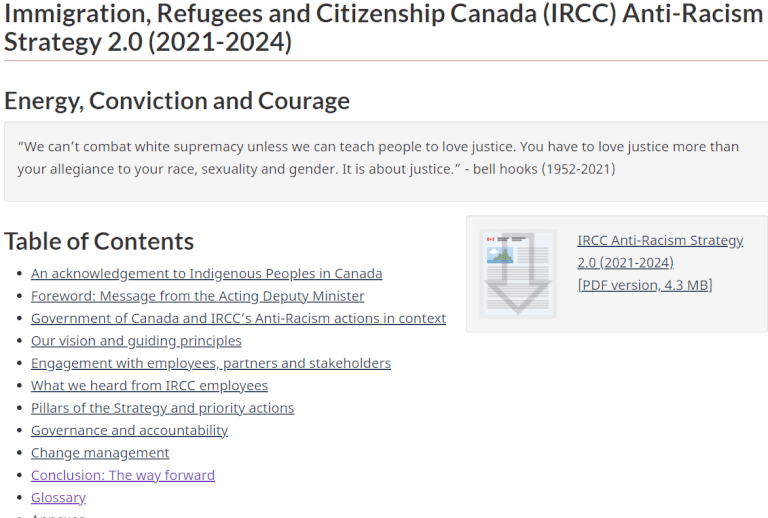
Let’s take a closer look at that quote.
“We can’t combat white supremacy unless we can teach people to love justice. You have to love justice more than your allegiance to your race, sexuality and gender. It is about justice.” – bell hooks (1952-2021)

And who was this Bell Hooks?
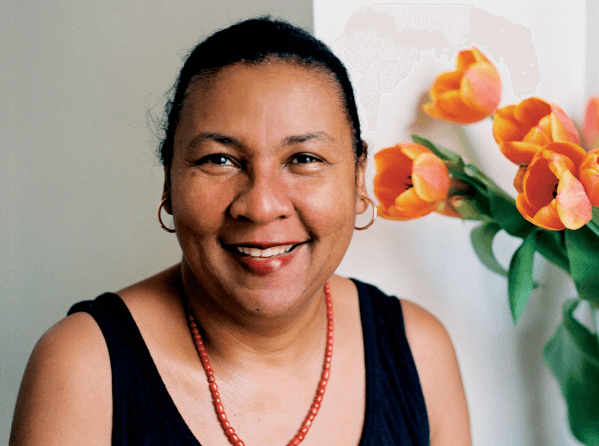
Say no more fam.
Canadian Federal Government Website:
Our efforts to advance Anti-Racism can only be truly realized with recognition of the unjust consequences of white-settler colonialism, our continued commitment to decolonization, and incessant striving to advance reconciliation with Indigenous Peoples in Canada. Given the immigration system’s historical and ongoing impact on the colonization of Indigenous Peoples, we bear the duty of maintaining the memory of the dispossession of Indigenous lands and the responsibility to seek creative ways of demonstrating our solidarity with Indigenous People’s struggles for recognition.

This is the very first paragraph on the very first page after the introduction. It’s also ridiculous in more ways than one. First of all, how are these Aboriginals helped by mass migration? Can anyone answer that question?
Of course not, because they aren’t. If you view these policies through the lense of hurting White People it makes perfect sense. Then again, they barely try to hide that, considering the very first page quoted some anti-White pseudo-intellectual going on about combating HuWhyte Supreemacy.
We would like to begin by acknowledging that the lands on which many of us live, work and gather, including the digital infrastructure enabling our work, are on the traditional territories of Indigenous nations. Immigration, Refugees and Citizenship Canada (IRCC)’s regional and international offices are also situated on a number of Indigenous territories’ throughout the country and abroad. We acknowledge that our national headquarters in Ottawa are on the unceded and unsurrendered territory of the Anishnaabe Algonquin nation whose presence here reaches back to time immemorial.
We respect the enduring presence and longstanding ties that Indigenous Peoples have to this land where we reside and flourish, however and whenever we may have come and settled. In recognition of the many and different territorial lands that each reader may be coming from, we encourage you to do your research and learn about the territory on which you reside. Explore how you can recognize the history of settler expansion and uplift the equity and sovereignty of Indigenous Peoples in your own way. We all share in the responsibility as Canadians—as Treaty peoples—to maintain respectful relationships with Indigenous Peoples.

That’s all a bunch of anti-White gibberish, but the part I bolded is especially important. The territory on which you reside is Canada, not the Musquean nation, or whatever. But the occupation government of Canada does not view Canada as a legitimate nation. They’ll also call you treasonous for disagreeing with any of their stupid and malicious pet issues, and especially for voicing your grievances in public.
Page three is a message from the Acting Deputy Minister of Immigration, Caroline Xavier. It’s exactly what you’d expect, so feel free to read just the bolded parts.
In 2020—2021 , Canadians experienced a reckoning: We took stock of the disconnect between our values of equality and the entrenched reality of racism in our everyday lives and workplaces. Our lives will be forever marked by the inequities that could no longer be ignored given the differential impacts of COVID-19, the surge of anti-Asian hate crimes during the pandemic, and the rising voices of Indigenous Peoples, Black, racialized and marginalized people in Canada who reignited the global movement against racism in the wake of the murder of George Floyd in the United States in May 2020. These events gave new impetus to efforts being made in the federal government as in other spheres of Canadian society, to reflect, re-think and decisively stand up against racism.
Immigration, Refugees and Citizenship Canada (IRCC) was among the first organizations in Canada to set up a dedicated team to provide Anti-Racism guidance to senior management and employees during this time. IRCC’s Anti-Racism Task Force, established in July 2020, outlined a strategy (subsequently articulated as Anti-Racism Strategy 1.0) to launch the Department on the path to building the foundations for the generational work required to eradicate racism in our policies, operations and people management practices. From the outset, we acknowledged that our work would require nothing less than a paradigm shift in the mindset of employees and senior management alike in how we foster and safeguard a culture of equity. We also knew that we would have to expand circles of discussion and engagement across multiple venues of dialogue within IRCC in order to empower employees and equip them with the required resources and tools, while simultaneously establishing mechanisms of management accountability for effecting long-lasting culture change. The employee-driven transitioning of IRCC toward a hybrid workplace also –
I actually don’t know what “hybrid workplace,” means. If someone can let me know that would be great.
– heightened the need to listen to some employees’ concerns about returning to workplaces due to fears of micro-aggressions and made us take additional steps to ensure our workplace is welcoming. We centered our reflections and actions on the crucial linkage between Anti-Racism in our workplace and Anti-Racism in our policies and program delivery to demonstrate, not only in words but also in actions, that “Anti-Racism is as Anti-Racism does”; that we are not content with merely setting an objective of “not being racist”; we are committed to being actively, creatively and tirelessly anti-racist.
Anti-Racism Strategy 2.0 (2021—2024) is part of our commitment to step up the initiatives for building an equitable and inclusive organization to benefit all people in Canada. With the proportion of Indigenous, Black and other racialized people projected to reach more than 40 percent of the working-age population in Canada by the end of the decade, the Strategy is an initial step to moving the Department to the forefront of fulfilling the promise of Canada as a truly diverse and inclusive country. It brings into focus and complements the burgeoning Anti-Racism actions spearheaded by senior management and employees at all levels of the Department since Strategy 1.0 was first released in Spring 2021. This iteration of the Strategy builds on extensive consultations with a broad spectrum of policy-makers, employees and allies across the Department and Government of Canada. It strengthens the overarching structure of the multiple departmental actions to create more strategic organizational change and to ensure that the applied principles and frameworks are consistent and sustainable.
The Anti-Racism Strategy Action Plan, the Anti-Racism Accountability and Transparency Framework and the Equality and Anti-Racism Systems Change Framework that drive our Anti-Racism work are the key elements that will clearly identify measurable goals, timeframes for results, key responsible departmental stakeholders, accountability mechanisms, change agents and processes to implement the Strategy. Our objective in sharing this iteration is to invite broader circles of government and non-government stakeholders and partners into the conversation on our shared Anti-Racism journey. We look forward to incorporating their feedback as we continue to improve and refine our strategic approach to the transformative changes of the Department.
At the early stages of this journey, we are mindful that there is no room for complacency; combatting systemic racism will require all the resources and attention we can collectively muster. Together, we are ready to actively listen, rigorously self-examine and decisively act to reduce and ultimately eliminate systemic racism in our workplace practices, policies, program outcomes and service delivery.

We’re only done with page 3 of 16, although the last five pages are the glossary and annexes. If you’re curious what Canada’s Acting Deputy Minister of Immigration, Refugees, and Canadian Citizenship looks like, here she is.
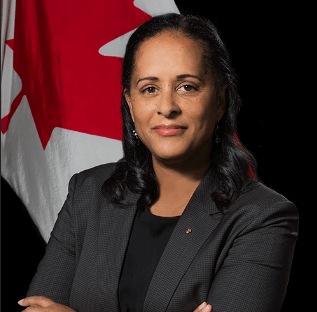
Caroline Xavier
What struck me most about her little rant was the combination of anti-White buzzwords with corporate buzzwords. It’s so nice to see that the synergies which enable us, as we speak, to further enhance the Black and Indigenous ecosystem of social justice activism. Senior management has taken the lead and started building a consensus of likeminded anti-racism people of brownness who are focusing on our core competency’s of moving the needle on the systemic oppression of all the colours of Canada, except Whitey.
And on to page 4:
Canada’s Anti-Racism Strategy 2019-2022 (Canadian Heritage, July 2019) and the Clerk’s Call to Action on Anti-Racism, Equity and Inclusion in Federal Public Service (Privy Council Office, January 2021) identify the unjust and harmful impacts of systemic racism on Indigenous Peoples, Black people and other racialized groups, and outline how the Government of Canada will begin to work toward removing barriers to equity and inclusion for racialized people in Canada. These overarching initiatives complement the Truth and Reconciliation Commission’s Final Report, including 94 Calls to Action (June 2015), the government’s recognition of the United Nations International Decade for People of African Descent (January 2018), and the implementation of the United Nations Declaration on the Rights of Indigenous Peoples Act (June 2021).
The ministerial mandate letters, including the letter addressed to the Minister of Immigration, Refugees and Citizenship Canada Mandate Letter (Prime Minister of Canada, December 2021), clearly articulate that the government’s priority is “to continue to address the profound systemic inequities and disparities that remain present in the core fabric of our society, including our core institutions,” and to this effect, “actively seek out and incorporate in [our] work, the diverse views of Canadians, [including] women, Indigenous Peoples, Black and racialized Canadians, newcomers, faith-based communities, persons with disabilities, LGBTQ2 Canadians, and in both official languages.” In this work the government is committed to “ensuring that public policies are informed and developed through an intersectional lens.”
Faith based communities, eh?

Funny, because I recall one particular faith based community having their religious sites burned to the ground without a single hate crime charge being levied. But just like these people say “diversity and inclusion for all,” when pushing policies that are designed to exclude White People, they say “faith based communities,” when they mean “yeah but fuck those Christians though.”
IRCC’s strategic Anti-Racism actions are at the forefront of Government of Canada initiatives to combat racism and discrimination in their various forms. The creation of the Anti-Racism Task Force in Summer 2020 has been pivotal to kick-starting coordinated Department-wide action. The Anti-Racism Value Statement (Annex A), publicly released in May 2021, acknowledges the impacts of our colonial legacy and historical racist policies that often work through the immigration system on Indigenous, Black and other racialized people. The openness to speak about racism has ushered in a series of Anti-Racism efforts at all levels of the Department, making our organization more inclusive with regard to people management, and improving the equity outcomes of policies, programs and service delivery practices (for a succinct overview of the Department’s Anti-Racism journey as of summer 2021, see its response to the Clerk of the Privy Council in the IRCC Letter on the Implementation of the Call to Action on Racism, Equity and Inclusion).
This is a great example of what I mean when I talk about corporate speak. It’s interesting seeing anti-White hate propaganda presented in conjunction with corporate double speak, but I suppose we should have predicted this.
The Department’s actions of self-examination and identifying accountabilities to support Anti-Racism work have catalyzed immediate action, demonstrating both the timeliness of the initiatives and the significant challenges ahead to advance on the path toward racial equity. IRCC’s first-ever Anti-Racism employee survey, conducted in fall 2020, provided a wealth of quantitative data regarding race-based discrimination experienced among different segments of our employees. The independent report, IRCC Anti-Racism Employee Focus Groups (PDF, 443 KB), prepared on behalf of the Department by Pollara Strategic Insights and published in June 2021, reveals key insights into the impact and nature of racism witnessed within the Department and the gaps in the current mechanisms to address discrimination.
More recently, in spring 2022, media attention directed at IRCC’s call centre in Montréal regarding an independent study of the work environment and various concerns raised by employees put the spotlight on how Anti-Racism initiatives can be brought to bear on employees’ day-to-day issues with the workload, nature of work, training, turnover and employment status. Regarding the policy and service delivery context, concerns raised over potential bias in the identification of special measures for refugees and displaced people (e.g. those fleeing war in Ukraine compared with refugees from Afghanistan, the Middle East and Africa) starkly reveal that the Department needs to be open-minded and self-critical in a more vigilant way—this, notwithstanding the significant advances made thus far in understanding the extent and nature of racism in our workplace, and in our policies, program design, service delivery and broader society.

It is pretty funny how even these people internally wanted Ukrainian refugees over Third Worlders.
Strategy 2.0 (2021–2024) (the Strategy) presents an increasingly integrated view of the Anti-Racism initiatives recently completed and currently under way. This iteration of our Strategy offers an overarching structure, that when viewed against the backdrop of the Government of Canada’s and IRCC’s Anti-Racism initiatives of the last few years, provides a refinement to our Anti-Racism work through a more focused and deliberate effort. Our intent is that this effort will build a model for systems change that includes concrete, actionable steps and a monitoring framework, which will generate increased momentum for the Department’s Anti-Racism work and lead to a sustainable culture shift.

Finally we’re done. I’m not going to even bother printing out the rest of this anti-White gibberish. Here’s a screencap from page 5.
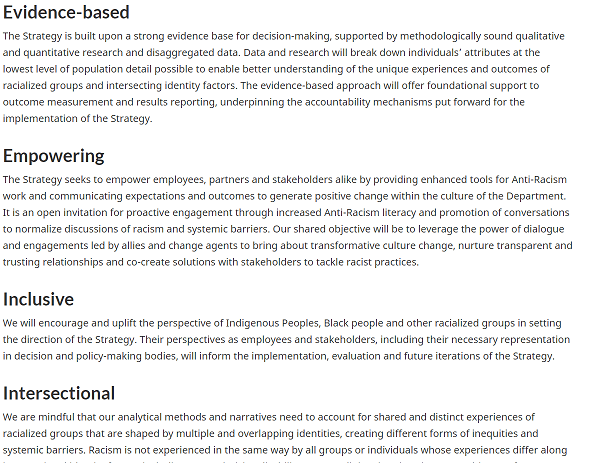
Page 6 has some quotes from IRCC employees. They are unnamed, maybe because they’re fake, but the content speaks for itself.
“In my 32 years as a black woman in the public service, I have learned to navigate the unspoken barriers and ignore slights from those in a position of power. I have experienced their micro aggressions and their indifference. Those managers and directors have not changed their beliefs or their attitudes simply because IRCC created a new mandate. They are still in power and I am still Black.”
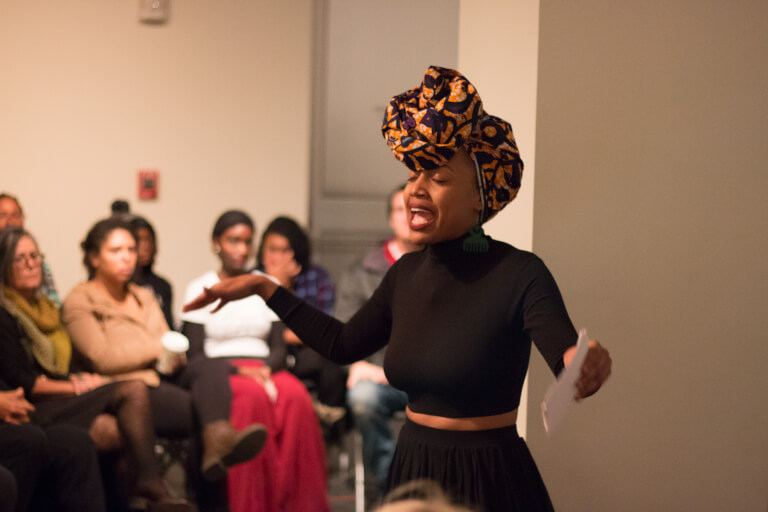
I’m bunching up the rest of the quotes all together. Sorry that the formatting got really weird.
“The thing required is to continue on the path that we have forged and not step back. This is a priority to change our thinking.” “There has been a concerted effort from management and staff to achieve the objectives of the strategy, clearly there is a lot of buy-in at all levels of IRCC. There is dedicated people passionately challenging the status quo with courage.” “I wish Anti-Racism topic was outdated and no longer necessary. I’m dreaming a bit but I hope one day we will not have to work harder to ensure equity and diversity.”
They then move on to their engagement with IRCC employees.
The unique perspectives of IRCC employees are the cornerstone of the Strategy. Employees’ insights, feedback, thoughts and concerns to address racism define the vision and the broad parameters of the Strategy. Quantitative and qualitative inputs include conversations and comments in meetings and presentations, data collected through live polls and online surveys. The engagement with employees and partners have included Let’s Talk Racism Town Halls, workshops on bias in policy development and service delivery, panels, Trust Circles, broad middle manager engagement with training and tools offered to navigate the Anti-Racism landscape, trauma coaching sessions with a subset of middle managers, working groups and committees set up within sectors, branches and regional offices. Engagement with diversity, equity and inclusion networks have included invitations to provide feedback from official Champions and chairs of Indigenous Peoples Circle (IPC), Persons with Disabilities Employee Network, Black Employees Network (BEN), Racialized Employees and Allies Network (REAN). The most detailed and comprehensive sources of quantitative data are the 2020 Public Service Employee Survey and the 2020 Anti-Racism Workforce Survey (first ever Anti-Racism survey at IRCC which had a response rate of almost 30 percent and whose analytical results were available to employees by spring 2021).
After they sent out some surveys to their own employees, and yes, this was their own employees, they move on in page 7 to the things their employees whined them into doing, although they already wanted to do them. I’m skipping over most of it, because it’s tedious stuff like:
- Emphasize a multi-prong, agile and dedicated approach at all levels (top down, middle, bottom up) – do not expect AR work to be carried out through the corner of one’s desk or as a box ticking exercise.
- Make the Strategy approachable, more like a conversation inviting and encouraging new ideas, a living document to which people will feel connected, touching their daily work experience.
- Continue hammering AR commitments, dedicating resources to track progress and drive home the message that this issue is not just talk.
- Start with smaller, concrete steps and be prepared to make mistakes over a long journey: Establish clear objectives, timelines, and how milestones will be achieved among other competing priorities.
But there is one part I do want to focus on.
- Pay attention to multiple forms of racism, including Islamophobia, Anti-Semitism, racism within the same minority group and among minority groups.
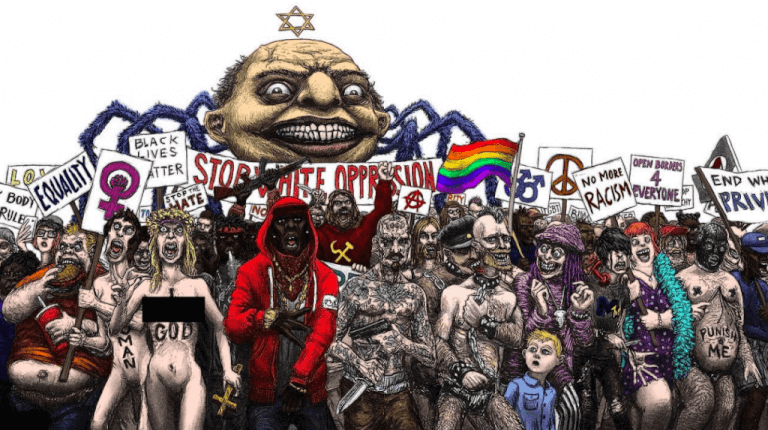
In other words, they want all these Third Worlders to be here to destroy “White Supremacy,” by which they mean White People. However, some of those Third Worlders have these really uppity attitudes towards Gods Chosen Race, so they do actually need to stamp that out of them. The more anti-White they are the better, but if they’re complaining about jews genociding Palestinians, for example, that’s not really the kind of anti-racism that we’re looking for.

Pictured: Some migrants are, unfortunately, against this.
Page 8 includes this very important graph that they include.
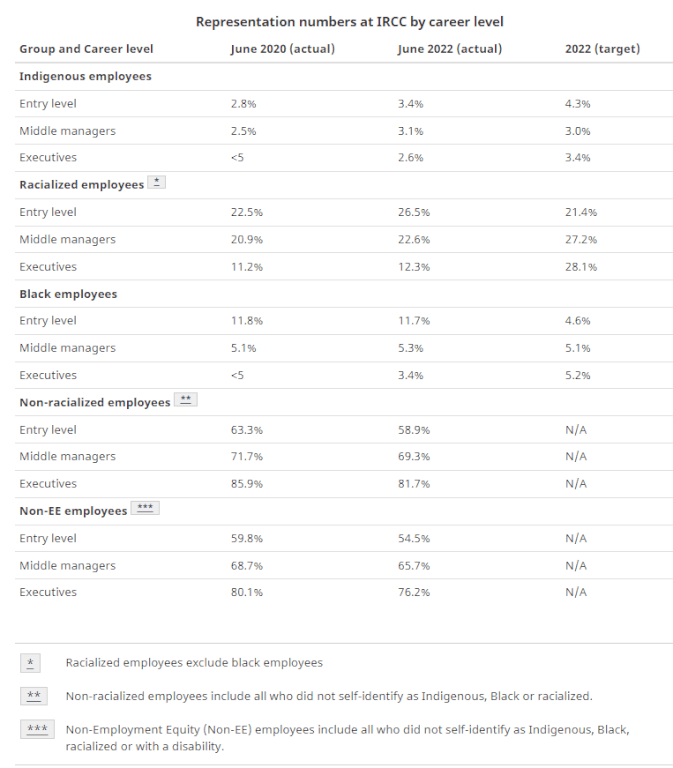
Pay close attention to that bottom part. As a matter of fact, let me zoom in on that.
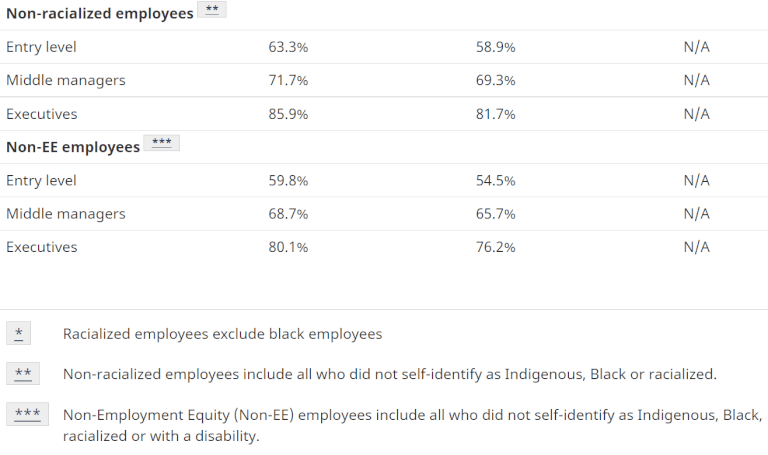
In other words, White People. Notice how there’s no target for the number of White employees? There probably is, but it’d be too bad optics to have that make its way into the general public. More than 70% of the Canadian population is White, and yet the Canadian federal government is bragging about our declining representation.
With that I’m skipping over the rest of this, and getting right to the glossary. You really need to click that and read it for yourself, but I’ve highlighted one section in particular that’s worth reading.
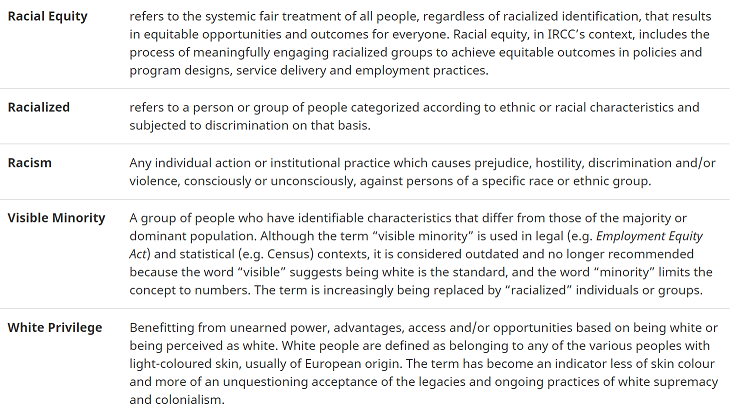
Hold on a second…
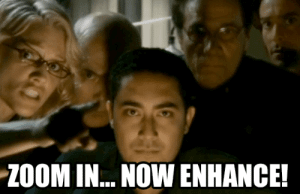
White Privilege
Benefitting from unearned power, advantages, access and/or opportunities based on being white or being perceived as white. White people are defined as belonging to any of the various peoples with light-coloured skin, usually of European origin. The term has become an indicator less of skin colour and more of an unquestioning acceptance of the legacies and ongoing practices of white supremacy and colonialism.
These people have a definition of White People that doesn’t require you to even be White.

With that I am done. That was a real slog, but this is your government folks. Bring over as many Third Worlders as possible, and privilege them constantly in employment and every other area, while taking seriously their hatred towards Israel. We are currently ruled over by a collection of extremely vicious clowns.

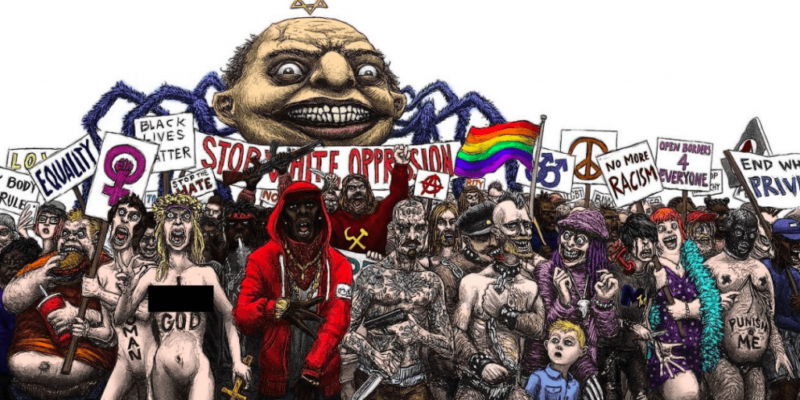







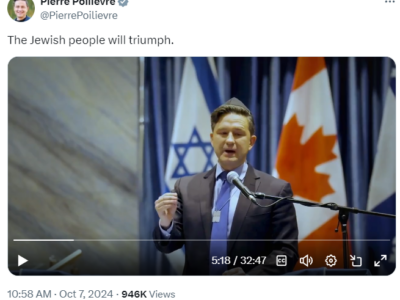




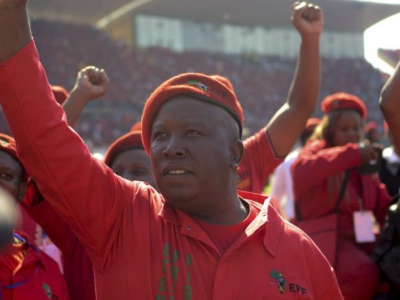

The malice and threat of all this is obvious — I do not understand why more Whites don’t see it, or are afraid to openly speak about it — Whites who think the non-whites who are demographically taking over our countries are any better than the ones who ruined Rhodesia and are ruining South Africa, while robbing and killing Whites, are naive.